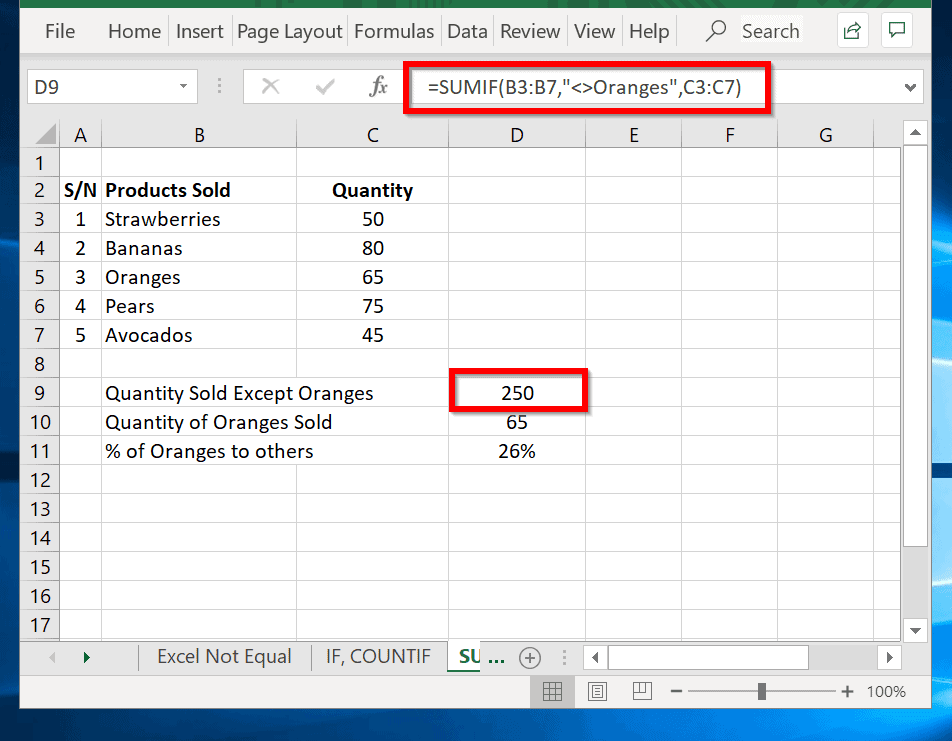

We use the same example like the one we use to illustrate IF with a “not equal to” logic condition. To give you an implementation example of this NOT and “equal to”, look at the screenshot below. For that, you have to use normal “not equal to” writing. That way, we will get the same logic value as if we use a “not equal to” writing there!Īs a note, however, you cannot use NOT and “equal to” to represent “not equal to” in a criterion. The resulting logic value from the comparison will be reversed by NOT. In the writing form, we pair two values that we want to compare using an equal symbol. For the one with the cell coordinate, we write the SUMIF criterion as “”&B4 (B4 is the cell with an “Orange” text value in it).Īs we can see in the example, we get the same results from both SUMIF writing! They are the product sales quantities total excluding the orange one. We want to sum the sales quantities of the products besides oranges and that can be done in those two ways.įor the “not equal to” criterion with the “Orange” text value, we write the SUMIF criterion as “Orange”. Here, we can see the writing of a “not equal to” criterion in SUMIF with a text value and cell coordinate. To make the understanding clearer, take a look at the SUMIF with a “not equal to” criterion implementation example below. We can also use both ways of “not equal to” criterion writing when we write the SUMIF formula sibling instead, SUMIFS. After the ampersand, we input the value we want the data to not equal to if we should sum their numbers.

We add an ampersand after the “not equal to” symbol and the quotes. = SUMIF ( data_range, “ ” & value, number_range )


 0 kommentar(er)
0 kommentar(er)
